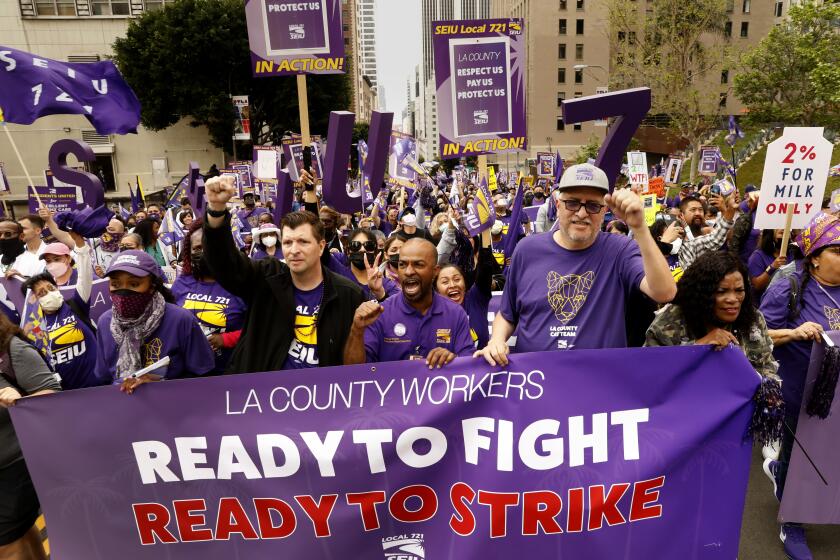The Fight Against Crime: Notes From the Front : Coroner’s Job Finding Body of Evidence
- Share via
Sometimes coroners have to be detectives. To figure out who died and why, they follow clues, check up on leads and examine circumstances and surroundings.
But it gets difficult when their main “witness”--the body--is so decomposed that it can’t tell the post-mortem story on which a coroner’s investigator relies. That’s when the Los Angeles County coroner’s office calls in Lloyd Mahanay, a senior criminalist with the county coroner’s office.
Twice in recent weeks the coroner’s office has grappled with high-profile cases of badly mutilated bodies and an unforgiving public demanding to know for sure who the people were and how they died.
First, there was the Northridge storage-facility mystery, in which an unsuspecting customer at a blind auction of abandoned goods purchased three long-dead bodies stuffed into two steamer trunks and a box. The bodies, which police believed had been stored for more than a year, were nearly liquefied, leaving few clues to their identity.
Then a grandfather, his daughter and granddaughter were run over by a Metrolink train in Glendale. Although family members said they were positive the bodies were those of their relatives, the bodies were so badly mangled that it took several days to identify them. That created a hardship for the family, which said it was difficult for out-of-state relatives to make plans to attend the funeral services.
Some techniques to identify remains are as simple as comparing driver’s license photos to the deceased’s face or having a relative look at pictures of the body.
But when there is no face left, the task becomes trickier.
Mahanay, a 16-year-veteran who lives in North Hollywood, said fingerprints and dental records are the two best alternatives.
“It’s very unique,” Mahanay said. “You have some dentists that can look back and identify their own work.”
But dental records require some clue as to the person’s identity. And in order to identify someone by fingerprints, the person must have prints on file and enough fingertip skin left to print.
The first condition is getting easier, Mahanay said. Criminals have long been fingerprinted, but many employers now also fingerprint their employees, as the military and many sectors of the civil service have long done, he said.
Prints sometimes can be obtained from long-dead corpses, Mahanay said.
If fingers have been mummified, experts can soften them up with chemicals, lifting the finger’s ridges.
If the fingers are decomposed, often all it takes is drying them off with a combination of a towel and a few chemicals, Mahanay said.
Other options include looking at tattoos, surgery scars and other more lasting characteristics. If bodies are so decayed that gender can no longer be determined, the coroner can call in a forensic anthropologist, who can distinguish male and female skeletons from the size and shape of pelvic bones.
From there, an examination and comparison to either a family’s records or missing persons reports can identify even severely decomposed bodies.
Tattoos, Mahanay said, are a good example.
“What you can do is very carefully remove the top layer of skin, which is decomposed, and get down to the next layer,” Mahanay said. “You can see the tattoo even better. You won’t have that color, but you’ll still be able to determine what the tattoo is.”
Scars are often visible beneath the decomposed layers, Mahanay said. Previously broken bones, old surgery marks, prosthetics, even bullet and knife wounds are often visible in the remaining flesh or marked into the bones, offering valuable clues.
For that reason, the decayed remains of those who suffered violent ends offer more clues to their demise than those who died of natural causes. To rule out foul play on a decomposed body, investigators must already have a lead on the identity and match it to medical records, Mahanay said.
Many times, he said, a decayed body combined with the usual difficulties in identifying someone can make the task impossible.
“It’s like being in a room with no door,” Mahanay said. “You’ve got to hope that somebody, somewhere will inquire about one of their relatives or friends.
“Sometimes you never know who they are.”
More to Read
Sign up for Essential California
The most important California stories and recommendations in your inbox every morning.
You may occasionally receive promotional content from the Los Angeles Times.










